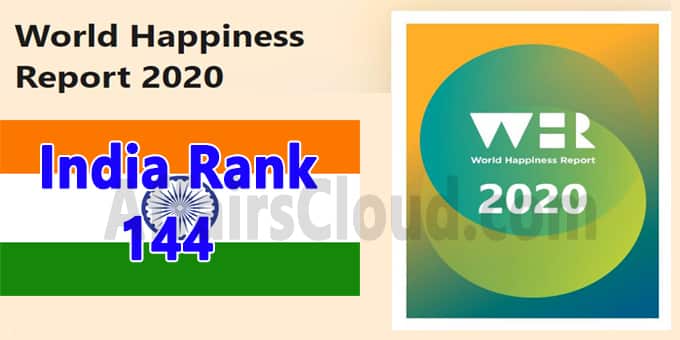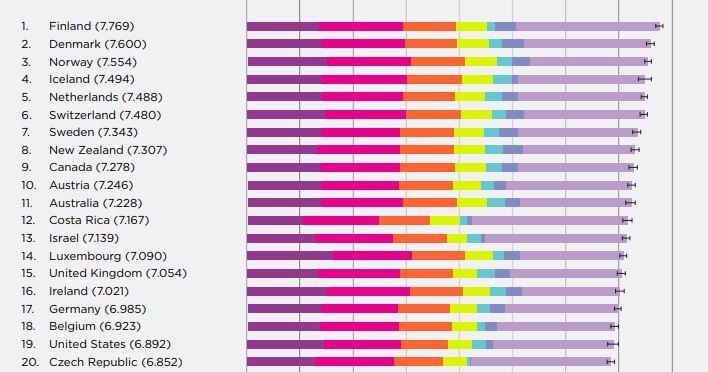 |
India has a GDP of 7.1% in the year 2017-2018, and it is one of the fastest-growing economies in the world.
But still, India ranks lower than Pakistan and Nepal, even though they have lower GDP growth rates than India.
There are many reasons for this.
The first and foremost reason is overpopulation. Overpopulation leads to a lot of competition even for basic amenities like clean water, food, shelter, quality education for the children, jobs, and so on.
Due to overpopulation, Indians are underpaid for the jobs which would fetch a higher income in other countries.
If you demand higher pay you can be even fired, and there would be no problem in finding a replacement.
With the prices of homes skyrocketing, the lower medium section and the poorer segment finds it difficult to find a shelter.
Another main reason is our education system. We burden our children a lot since the onset of their schooling, to be on top, to ace the fellow students in each and every spectrum.
Children of 3rd and 4th are weighed down by exams, heavy bags, a lot of subjects, and parental pressure.
The pressure becomes humongous as the child reaches 10th and 12th, and hence we see a lot of suicides happening at this age.
Also, our education system imparts only theoretical knowledge and not a practical one.
Lack of awareness of mental health problems is another major reason.
There is a lot of stigmas attached to mental health, and people call names t someone who takes mental health treatment rather than making a better environment for them.
Also, with the lack of availability of psychologists and psychiatrists, the problem aggravates.
The other reason is the lack of gender equality. A section of the population doesn't even get the right to get educated, choose a career for themselves, and have a say in choosing their life partners.
Domestic violence and dowry-related deaths are still common in India. Married women in India commit suicide in large numbers.
Human trafficking and sex work are also quite common for women in poverty-stricken households.
Religious hatred also one of the major things which divide India. We all have seen religious hatred cases and we all know the inherent biases.
Honor killings are a sad reality of India. Even in the same religion or same caste, there are subdivisions, and people discriminate even on the basis of that.
 |
| Top countries |
People in the west (USA, Europe) try to chase what they love and their minds are imbibed by the thought to pursue what they love from childhood itself.
The majority of the population in India comes from the poor and Middle class where people think of getting rich. For that, they restlessly work under harsh conditions.
We can see that people working up to 14-15 hrs a day standing in front of the machine which sometimes includes night-shifts.
In India money has become a major goal to chase such that, "People know the price of Everything; But the value of nothing". This process is leading to insecurities, stress, and anxiety in Indian people.
The main measure of “happiness” is based on responses to surveys of how individuals subjectively evaluate their life circumstances on a 0-10 scale.
National scores are averages across individual responses. Finland tops the rankings with a score of 7.769, while South Sudan is at the bottom with a score of 2.853.
India’s score is 4.015, and Pakistan’s is 5.653. India’s score has decreased by over one point since 2005-06, with most of this decline coming since 2011, short-circuiting a slight recovery from a post-financial-crisis fall.
The report also looks at more fleeting “emotional” states based on reporting recent behaviour indicating positive “affect” (such as occasions of laughter) and negative “affect” (such as feeling anxious).
India ranks somewhat higher on these measures, and equal or better than Pakistan.
This is important, because it gives a clue to what the main indicator of “happiness” actually tells us.
The report uses data on other variables, some from national statistics, such as GDP per capita and healthy life expectancy, and others also from surveys, such as perceptions of social support, freedom of choice, and societal corruption.
A statistical exercise uses these variables to try to explain subjective evaluations by country and year.
These variables turn out to have significant explanatory power, and have estimated effects that fit with our intuition: on average, a richer country has higher subjective evaluations of life circumstances, as does a nation with more social support, lower perceived corruption, and so on.
Some commentators have focused on these variables to explain India’s low happiness score. But none of them are components of the score, which is based on direct reporting, so these analyses are off base.
No comments:
Post a Comment